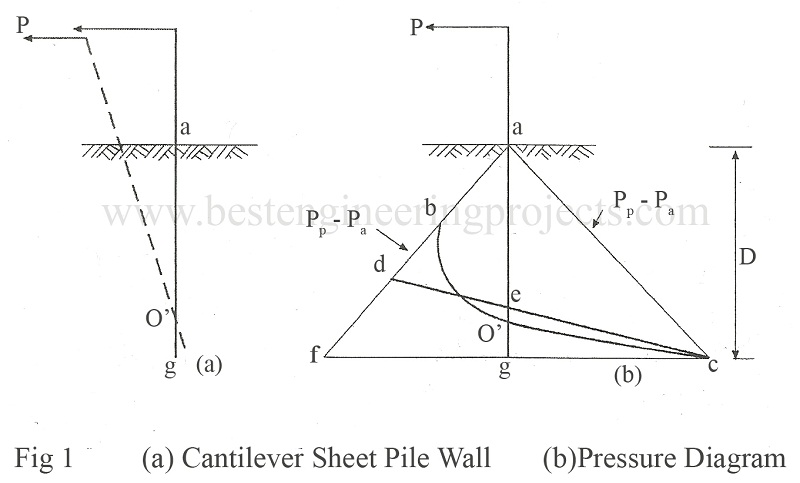Cantilever sheet piles are used where the height of the soil or water to be retained is smaller than 4.5 m. The various forces acting on a cantilever sheet pile wall are the active earth pressure on the back of the wall and the passive earth pressure on the front of the wall. The active pressure tends the wall to move away from the backfill while the passive earth pressure resists the wall movement.
General Principle of Design of Structures of Cantilever Sheet Pile Wall
Figure 1 shown below illustrates the action of earth pressure against a cantilever sheet pile wall. The sheet pile is assumed as perfectly rigid.
Under the action of a horizontal force, P applied at the top, the upper portion of the pile tilts in the direction of P and the lower moves opposite to the direction of the applied force P. This is shown by a dotted line in the figure. Hence, the pile must have some rotation at certain position near the bottom. This point is shown as O’ in the Fig.1 (a). The pile above O’ is subjected to a passive earth pressure from the soil on its left side and active earth pressure in its right side, whereas the lower portion shown as is subjected to a passive earth pressure on the right side and an active earth pressure on the left side.
At point O’ the pile does not move and the net earth pressure at the point will be nil. The net earth pressure is represented by the diagram abO’c. The curve is replaced by a line dc for the purpose of the design. The point d on the line af is so located that the sheet pile is in equilibrium under the action of the force P and the earth pressures represented by areas ade and ecg. The position of the point d is obtained by trial and error.
